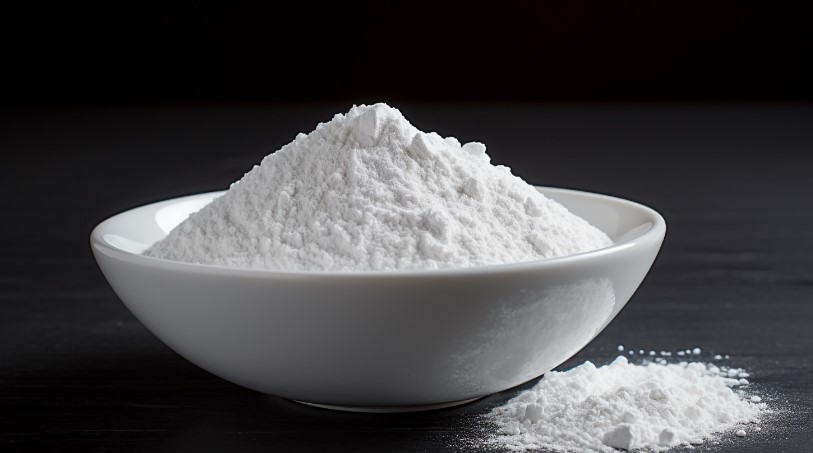Койевая кислота обладает эффектом отбеливания кожи и т.д.

Want to get rid of dark spots and make your skin look fairer and brighter? Say hello to kojic acid – a cosmetic ingredient that has recently received attention for its brightening and antioxidant properties. Kojic acid can be used as a substitute for hydroquinone (the main ingredient used in many skin lightening products) and glycolic acid, or use these ingredients together. Kojic acid has become a well-known ingredient in topical medications for hyperpigmentation, melasma and dark spots because it reduces the production of melanin in the skin.
Что такое койевая кислота?
Kojic acid is a chemical produced by different species of fungi and is a byproduct of fermented rice and soy sauce. It can be used topically to reduce the appearance of dark spots, brighten skin tone and promote healthy aging. Its main function in cosmetology is to prevent the formation of tyrosine, an amino acid needed to produce melanin, a pigment that affects skin tone. You can find metabolites as ingredients in skin creams, lotions, and soaps. Studies have shown that kojic acid and its derivatives have anti-oxidation, anti-proliferation, anti-inflammation, anti-ultraviolet and brightening effects on the skin. Type/variety
Kojic acid is used in cosmetics in concentrations between 1% and 4%, but it is recommended to start with concentrations of 2% or less, especially for products left on the skin and not washed off. You may find it in ingredient lists for a variety of beauty and body products, including:
• Soaps and cleaners
• Face cream
• Serum
• Powder
• Lotion
• Face and body oils
• Face mask
In general, the absorption rate of kojic acid is very low, so it stays on the surface of the skin. Some products that contain acids can remain on the skin, such as serums and lotions, and some products can be washed off, such as facial cleansers.
Kojic acid Benefits/Uses
1. Kojic acid Whiten your skin
Studies have shown that kojic acid can slow down tyrosinase activity required for melanin formation. This allows it to inhibit hyperpigmentation by reducing melanin formation or stopping pigment production. Studies have shown that people use over-the-counter products containing kojic acid to lighten their skin, especially dark areas or patches. If you have discoloration or hyperpigmentation due to sunburn, melasma, blemishes, scars, or inflammation, using kojic acid serum or cleanser may help even out your skin tone and brighten these areas. Unlike some other whitening ingredients, kojic acid does not cause a hyperwhite reaction, so it may be more suitable for people with darker skin tones for a more subtle effect.
2. Kojic acid Protect your skin from UV rays
Kojic acid soaps, creams, and other products contain antioxidants that have been shown to help combat free radical damage caused by exposure to UV light and pollution. The antioxidant properties of this natural ingredient enable it to promote healthy aging and a more youthful appearance.
3. Kojic acid It has antibacterial effect
Perhaps it’s not its most famous asset, but kojic acid does have antibacterial effects and can be used topically to fight infection and reduce inflammation.
Kojic acid Risks and side effects
Kojic acid may cause irritation but is usually well tolerated. If you experience itching, burning, or irritation after using products containing acids, discontinue use immediately. If your skin is sensitive, start with a product with a lower acid concentration, such as 1%. Small heart Koji Acid powder, which allows you to add liquids and create your own recipes. To keep track of concentrations, it’s best to start with a trusted product with a specific concentration listed on the label. Although one animal study suggests that higher concentrations of kojic acid may promote tumor growth, the researchers believe that the acid is slowly absorbed into the bloodstream through the human skin and may not reach the levels needed for this adverse effect to occur.
How to use (dosage)Kojic acid
Products containing kojic acid are usually used every day, although it does depend on the form, concentration, and accompanying ingredients. If you are not familiar with this acid, use it a few times a week at a lower concentration, about 2% or less. Always wear sunscreen when using products that contain whitening ingredients, as prolonged use can make you more vulnerable to sun exposure. Some serums and other products used to reduce pigmentation include kojic acid, hydroquinone, and glycolic acid. You can also find serums or face oils that contain vitamin C to boost anti-aging antioxidants. Be sure to buy from a reputable brand and start with a small area of skin to rule out any adverse reactions.
conclusion
Kojic acid is a whitening ingredient that comes naturally from mushrooms and some fermented foods. It helps slow the production of melanin, making it a useful ingredient for treating hyperpigmentation, melasma and dark spots.
Backvita
